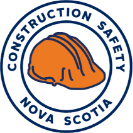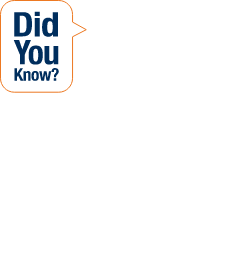
Return to Work


Follow these links
to related legislation
Highlighted words reveal
definitions and supplementary
information when selected
A Return to Work (RTW) program sets up injured employee for success when an injury or illness occurs. It outlines how the employer is prepared to assist the injured employee through their recovery for both physical and mental injuries by providing modified or alternate duties that fit their functional abilities.
When employees become injured or ill at work, a large part of their recovery will be feeling supported by their employer through the process. A well-designed program is key to ensuring that employees feel comfortable returning to work and completing the tasks assigned.
Return to Work (RTW): Designed for employees who have lost time due to an injury or illness in the workplace. The objective is to review information submitted by health care professionals and find appropriate and meaningful ways to bring the employee back into the workplace in a safe and timely manner.
Stay at Work (SAW): Designed to intervene early in the injury or illness and work with the employee to keep them in the workplace while they recover. Ideally, in this program, there would be no lost time.
Modified Duties: Adjusting the employees’ current job to accommodate the injury or illness. This should be based off a functional ability assessment by a health care professional (if available), as to not place unrealistic physical, or mental, demands on the employee. Modified duties could be allowing more breaks or performing the task sitting instead of standing. Whatever is decided, it is important to ensure they are meaningful and productive for both the employee and employer.
Alternate Duties: Offers the injured or ill employee with tasks that they typically would not do during their regular shift. Employers may offer alternate duties because the task matches better with what the injured or ill employee can do based off their functional abilities. Whatever is decided, it is important to ensure they are meaningful and productive.
Benefits of RTW and SAW Programs
The longer a worker is away from work, the less likely they are to return to their pre-injury job. A carefully managed early and safe return to work can be beneficial to all parties.
Employee Benefits
- Maintains job security, seniority, and benefits.
- Receives the treatment needed to recover.
- Continues to perform key job skills.
- Keeps being paid regular wages or limits the amount of time collecting WCB benefits.
- Increases employee involvement and activity levels.
- Minimizes disruption to the employee’s family.
- Focuses on what they can do instead of what they cannot do.
- Maintains their confidence and helps them feel valued.
- Maintain social contact with coworkers and the workplace.
Employer Benefits
- Retains experienced workers in the workplace.
- Reduces productivity losses.
- Reduces costs of hiring and training new workers.
- Enhances communication between employee and employer.
- Maintains morale of the workforce.
- Reduces claim costs which can reduce workers’ compensation premiums.
- Ability to use the RTW and SAW programs for non-work related injuries.
RTW/SAW Program Elements
A program should be written in consultation with the joint health and safety committee or representative. The program should also make sure that all injured or ill employers are treated in a fair and consistent manner. Below are some elements that may be considered when developing a program:
- RTW/SAW Policy statement outlining the employer’s commitment to the program.
- Identify the RTW/SAW team and their roles and responsibilities.
- Complete a job demands analysis and maintain on file for reference. This allows for quick review and comparison between an injured or ill employee’s functional abilities and job demands to determine suitable modified/alternate duties.
- Create a list of standard precautions including movements to avoid depending on what part of the body is injured. Please remember that these precautions may not apply in all cases. Each case needs to be evaluated based on the specifics of the injury and work.
- Develop a list of modified and alternate duties that may be performed by an injured employee.
- Create a general RTW/SAW Plan that can be adapted for the injured or ill employee that outlines the RTW/SAW strategy and communication plan. This may include an example of the first two weeks of modified or alternate duties the injured employee will complete and ensure it is possible to have everyone sign off as proof of agreement.
- Create a letter template that can be sent with the injured worker to their health care professional advising them of the RTW/SAW program and availability of modified or alternate work.
- Determine a method to measure the effectiveness of the program and make any changes to continue to enhance the program.
RTW/SAW Considerations
Employers have a “duty to accommodate” employees with physical or mental disabilities. An accommodation is a modification to rules, policies, practices, or tasks that allows a person to participate fully, without discrimination. Employers must make every reasonable effort, short of undue hardship, to accommodate an employee who may have a permanent or temporary disability (both physical and mental) after an injury. Accommodations should be based on the current mental and physical function abilities of the employee, and cooperation from all parties is crucial throughout the process.
An employer should:
- Become familiar with a functional ability form, or the Physical Ability Form (Form E) used by WCB in Nova Scotia. This is completed by health care providers and is where an employer will get the information regarding the employee’s functional ability.
- Create a communication log for claims and document each conversation with the employee, WCB, health care providers, etc.
- Investigate all workplace injuries and illnesses to identify the root cause of the incident and to prevent a similar incident from occurring.
- Partner with a WCB Approved Service Provider so that if an injury occurs, they are more likely to get in right away, limiting any delays in treatment. A complete list of providers can be found on the WCB website.
- Review and understand the WCB Nova Scotia Direct Access to Early Assessment of Strains and Sprains at Work program. It is designed to get fast assessment and treatment of strain/sprain injuries.
- Did You Know? The most commonly injured area of the body is the back and legs within the construction industry.
- Did you Know? In 2019, 65.2% of injuries in Nova Scotia (all industries) were strain or sprain injuries.